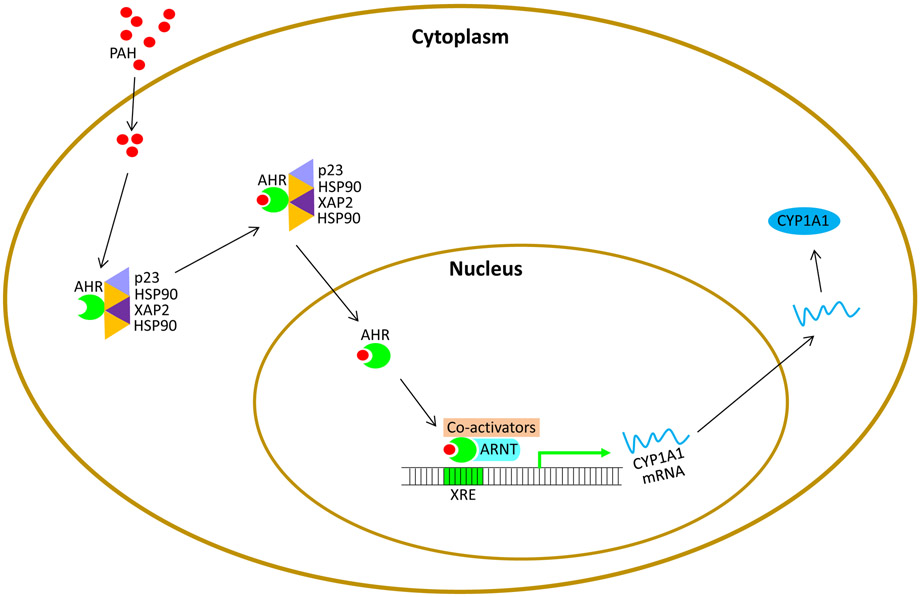Figure 4.
Once the body is exposed to PAHs, the PAHs will enter the cytoplasm to react with the aryl hydrocarbon receptor (AHR) complex that also consists of p23, XAP2, and two HSP90 molecules. The PAH-AHR complex then dissociates from the other molecules and migrates to the nucleus. Dimerization occurs between AHR and ARNT, which allows AHR to bind to xenobiotic-responsive element DNA binding site. Once bound, co-activators are drawn to the site and help induce histone modifiers, histone deacetylase (HDAC) and DNA methyltransferase (DNMT), which were originally bound to the CYP1A1 promoter site. These histone modifiers dissociate, and CYP1A1 transcription occurs.

